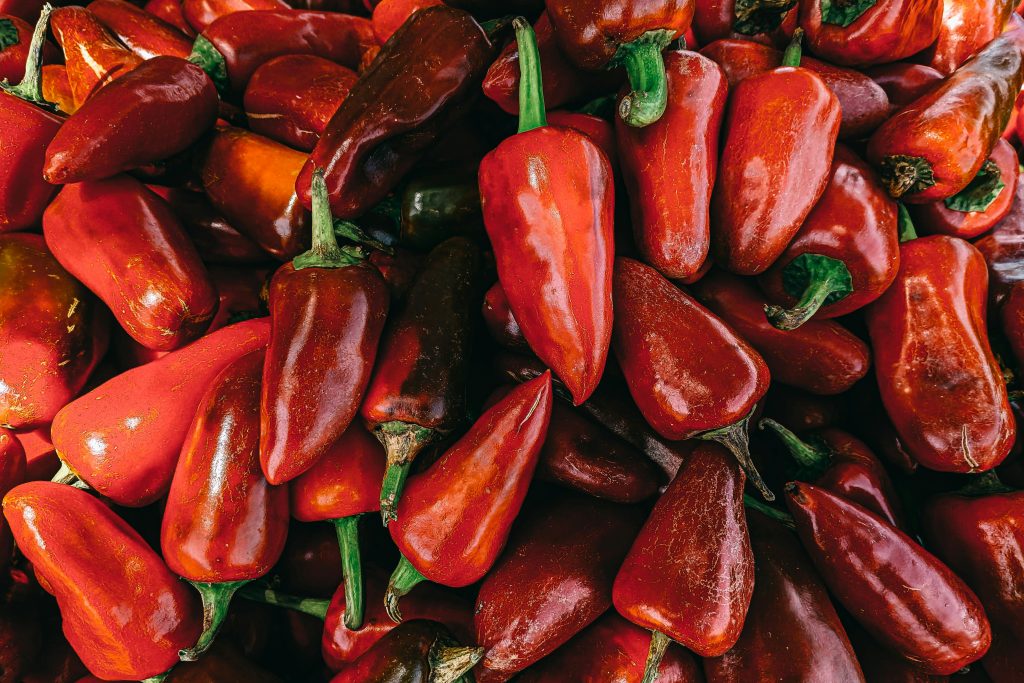Red hot peppers are not only a fiery addition to your culinary creations but also a vibrant and exciting addition to your garden landscape. With their striking colors, spicy flavors, and prolific growth, red hot peppers can enliven your garden and add a dash of excitement to your outdoor space. In this article, we’ll explore the many benefits of growing red hot peppers and share tips for cultivating these fiery beauties in your garden.

- Dazzling Colors: One of the most striking features of red hot peppers is their vibrant hues that range from bright red to deep crimson. Whether they’re dangling from compact bushes or climbing trellises, the sight of ripe red peppers against lush green foliage is a feast for the eyes and adds visual interest to your garden landscape. Incorporate red hot peppers into your garden beds, containers, or ornamental borders to create stunning color contrasts and eye-catching focal points.
- Spicy Flavors: Red hot peppers pack a punch of flavor that can range from mildly spicy to intensely fiery, depending on the variety. From the smoky heat of chipotle peppers to the tongue-tingling zest of cayenne peppers, there’s a red hot pepper variety to suit every palate and culinary preference. Experiment with different pepper varieties to discover your favorites and add depth and complexity to your dishes with their bold flavors.
- Culinary Versatility: Red hot peppers are incredibly versatile ingredients that can be used in a wide range of culinary applications. Add sliced red peppers to stir-fries, salads, and salsas for a pop of color and heat, or roast them with olive oil and seasonings for a smoky, savory flavor. Preserve your red hot peppers by drying, pickling, or freezing them for year-round enjoyment, or use them to make homemade hot sauces, chili powders, and spicy condiments.
- Nutritional Benefits: In addition to their fiery flavor, red hot peppers boast an array of health benefits that make them a nutritious addition to your diet. Rich in vitamins, minerals, and antioxidants, red hot peppers are known for their anti-inflammatory properties, immune-boosting effects, and metabolism-boosting properties. Incorporating red hot peppers into your meals can help support overall health and well-being and add a nutritional boost to your diet.
- Easy to Grow: Red hot peppers are relatively easy to grow and thrive in a variety of growing conditions, making them ideal for gardeners of all experience levels. Plant red hot pepper seeds or seedlings in well-drained soil with plenty of sunlight, and water them regularly to keep the soil evenly moist. Mulch around the base of pepper plants to retain moisture and suppress weeds, and fertilize them periodically with a balanced fertilizer to promote healthy growth and abundant fruiting.
- Ornamental Appeal: In addition to their culinary and nutritional benefits, red hot peppers also have ornamental appeal and can be grown for their decorative value alone. With their vibrant colors and compact growth habits, red hot pepper plants make attractive additions to ornamental gardens, patio containers, and window boxes. Mix and match different pepper varieties with complementary foliage plants and flowering annuals to create stunning garden displays that delight the senses.
Red hot peppers are more than just a spicy ingredient – they’re also a colorful, versatile, and rewarding addition to your garden landscape. Whether you’re a culinary enthusiast looking to add heat to your dishes or a garden lover seeking to spice up your outdoor space, red hot peppers are sure to enliven your garden and bring a fiery burst of flavor and excitement to your life. So roll up your sleeves, get your hands dirty, and start growing red hot peppers to add sizzle and spice to your garden adventures.



